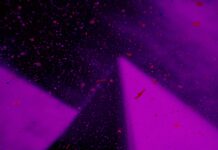Speculative Evolution, a fascinating field at the intersection of biology, paleontology, and imagination, invites us to contemplate the diverse and fantastical forms life could take under different evolutionary scenarios. It serves as a creative endeavor to envision the potential trajectories of life on Earth and beyond, exploring what organisms might evolve given different environmental conditions and evolutionary pressures. The term Speculative Evolution itself encapsulates the essence of this field, where scientists, artists, and enthusiasts engage in a thought experiment that extends beyond the constraints of our current understanding of biology and natural history.
In the realm of Speculative Evolution, the first mention of the term introduces us to a conceptual playground where the rules of conventional evolution are stretched and reimagined. It’s a space where creatures with improbable anatomies, adaptations, and behaviors come to life in the minds of those who dare to explore the uncharted territories of biological possibility. Speculative Evolution encourages us to set aside preconceived notions about the limits of life forms and instead invites us to consider the myriad ways in which organisms could adapt and thrive in diverse and often extreme environments. It’s an exercise in breaking free from the shackles of existing biological paradigms, fostering creativity and imagination in the process.
The concept of Speculative Evolution has gained traction as a means to bridge the gap between science and art, pushing the boundaries of our understanding of biology while inspiring awe and wonder. The second mention of Speculative Evolution underscores its dual nature as both a scientific endeavor and a creative outlet. Scientists and researchers engage in the speculative process to explore the limits of biological possibility, posing questions about how life could evolve under hypothetical conditions. Simultaneously, artists contribute to the field by bringing these speculative organisms to life through illustrations, sculptures, and other artistic expressions. This interdisciplinary approach creates a unique synergy, where scientific rigor intersects with artistic imagination, leading to a rich tapestry of speculative biological diversity.
The roots of Speculative Evolution can be traced to the works of visionaries like Dougal Dixon and his influential book “After Man: A Zoology of the Future.” Dixon’s work, which envisioned a world populated by imaginative future creatures, laid the groundwork for the field. The third mention of Speculative Evolution pays homage to its historical roots and acknowledges the pioneers who paved the way for this captivating exploration of biological what-ifs. Since Dixon’s pioneering efforts, Speculative Evolution has evolved into a broader and more diverse field, attracting contributions from scientists, paleontologists, artists, and science fiction enthusiasts alike.
Speculative Evolution serves as a platform for scientists and researchers to pose hypothetical questions about the adaptability of life under altered conditions. The fourth mention of Speculative Evolution emphasizes its role as a tool for scientific inquiry, allowing researchers to explore the potential outcomes of evolution in response to different environmental, climatic, or geological changes. By extrapolating from our understanding of existing evolutionary processes, scientists can generate speculative scenarios that push the boundaries of our knowledge and challenge our assumptions about the constraints on life’s diversity.
One of the intriguing aspects of Speculative Evolution lies in its ability to inspire a sense of wonder and curiosity about the possibilities of life beyond our current understanding. The fifth mention of Speculative Evolution delves into its role in sparking public interest and engagement with science. As imaginative depictions of speculative creatures capture the public’s attention, it fosters a curiosity about the mechanisms of evolution, the interconnectedness of ecosystems, and the incredible adaptability of life forms. In this way, Speculative Evolution becomes a bridge between the scientific community and the broader public, inviting people of all ages to explore the wonders of evolutionary biology in a captivating and accessible manner.
The speculative nature of Speculative Evolution also finds a home in science fiction, where authors weave narratives that explore alternate evolutionary paths and the consequences of extraterrestrial life. The sixth mention of Speculative Evolution delves into its connection with science fiction literature, highlighting how speculative scenarios play out in the context of fictional worlds. Whether on distant planets or in future Earth scenarios, speculative evolution becomes a storytelling device that adds layers of complexity and intrigue to narratives, allowing authors to explore the intersections of biology, ecology, and the human experience.
Speculative Evolution is not confined to static illustrations or literary works; it has found a dynamic expression in digital media and virtual worlds. The seventh mention of Speculative Evolution explores its presence in digital platforms and simulations, where enthusiasts and professionals alike create interactive environments that showcase the hypothetical evolution of organisms. Virtual ecosystems, animated creatures, and dynamic simulations allow users to immerse themselves in speculative worlds, providing a hands-on experience of the imaginative possibilities that Speculative Evolution unfolds.
As Speculative Evolution continues to captivate minds and imaginations, it holds the potential to contribute to our understanding of conservation biology and the future of biodiversity on Earth. The eighth mention of Speculative Evolution considers its implications for real-world applications, emphasizing how the creative exploration of alternative evolutionary scenarios can inform our approach to preserving existing ecosystems and species. By envisioning potential futures for life on Earth, Speculative Evolution prompts us to reflect on the impact of human activities and consider the conservation measures needed to ensure the survival of diverse life forms.
In conclusion, Speculative Evolution stands as a testament to the boundless nature of human imagination and the inherent curiosity about the mysteries of life. From its historical roots to its modern intersections with science, art, and literature, Speculative Evolution invites us to explore the fantastical realms of what could be. It serves as a bridge between the known and the unknown, sparking scientific inquiry, artistic expression, and public fascination with the wonders of evolutionary biology. As Speculative Evolution continues to evolve and find new avenues of expression, it remains a captivating journey into the realms of biological possibility, where the boundaries of reality and imagination blur in the pursuit of understanding life’s incredible diversity.Whether on distant planets or in future Earth scenarios, speculative evolution becomes a storytelling device that adds layers of complexity and intrigue to narratives, allowing authors to explore the intersections of biology, ecology, and the human experience.


















